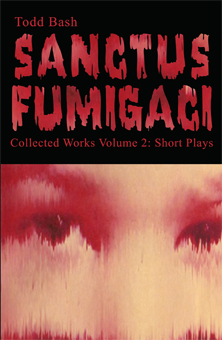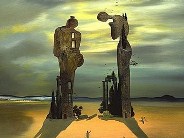
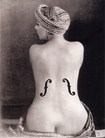
SURREALIST PERIODICALS
Contents:
Littérature
La Révolution Surréaliste
English Translations of Articles from La Révolution Surréaliste
Le Surréalisme au service de la révolution
Minotaure and Post-War Publications
Periodicals from the Belgian Surrealists
Other Periodicals
Littérature
Founded by André Breton, Philippe Soupault and Louis Aragon in 1919, Littérature began as a rather routine avant-garde periodical. However, with each subsequent issue, something unique began to emerge. By the end of its first year, Littérature had featured the writing of Lautréamont, excerpts from Breton's and Soupault's The Magnetic Fields and poetry by Eluard. In 1920, with the arrival of Tristan Tzara in Paris, the periodical took on a Dada stance. In fact, issue number 13, published in May of 1920, included three Dada manifestos.
During the summer of 1921, Littérature took a break that lasted nearly nine months. In March of 1922, a new series was launched, revealing a different approach. Issue number 1 featured three accounts of dreams by Breton, as well as an interview with Sigmund Freud, and a commentary on Lautrémont. The path toward Surrealism had begun. Subsequent issues featured the participation of Benjamin Péret, Robert Desnos, Roger Vitrac, Giorgio de Chirico, Max Morise, Jacques Baron, Jacques Rigaut, Francis Picabia, Man Ray & Marcel Duchamp, among others.
Littérature was published in Paris from 1919 to 1924. There were thirty-three issues in all, twenty from the first series (1919-21) and thirteen from the second series (1922-24).
Notes:
1. The French publisher Jean Michel Place has advertised an anthology featuring all thirty-three issues of Littérature. Unfortunately, it appears the publication is currently unavailable.
2. The University of Iowa Libraries offer an International Dada Archive online, where all issues of Littérature can be viewed and downloaded.
3. Several articles from Littérature have been translated into English and are featured in The Dada Reader, published by the University of Chicago Press.
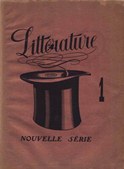
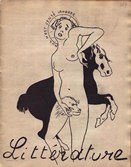
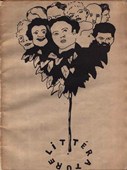
La Révolution Surréaliste
La Révolution Surréaliste was launched in 1924, the same year André Breton wrote his first Surrealist Manifesto. For the next five years, it served as the official publication of the surrealist movement.
Issue 1 (December 1924)
Highlights include two chapters from Robert Desnos's automatic writing Mourning For Mourning, an excerpt from Benjamin Péret's The Elegant Ewe and a dream by Giorgio de Chirico. Among other contributors are Breton, Jacques-André Boiffard, Paul Eluard, Max Morise, Louis Aragon and Man Ray.
Issue 2 (January 1925)
Features the inquest Is Suicide A Solution?, as well as contributions by Breton, Desnos, Aragon, Antonin Artaud, André Masson, Jacques Vaché, Michel Leiris and Man Ray.
Issue 3 (April 1925)
The cover announces "END TO THE CHRISTIAN ERA." Several commentaries by Artaud are featured, including Address to the Pope and Address to the Dali Lama. Among other contributors are Breton, Eluard, Morise, Desnos, Péret, Aragon, Masson and Raymond Queneau.
Issue 4 (July 1925)
Opens with an announcement by Breton, regarding the future direction of the magazine. (Perhaps this was prompted by his disapproval of the previous issue, which had been dominated by Artaud.) Highlights include excerpts from three important surrealist works: Desnos's Liberty or Love, Péret's Death to the Pigs and Breton's Surrealism and Painting. Other contributions are made by Eluard, Morise, Leiris, Aragon and Marcel Noll, with illustrations by Pablo Picasso, Joan Miró, Max Ernst and Man Ray.
Issue 5 (October 1925)
Features surrealist texts by Queneau, Eluard and Pierre Brasseur; poems by de Chirico and Desnos; dreams by Morise and Leiris; and illustrations by Miró, Ernst, Picasso and Masson.
Issue 6 (March 1926)
Highlights include two poems by Péret, Aragon's Enter the Succubi, Pierre Unik's Long Live the Bride and an excerpt from Breton's Surrealism and Painting. There are illustrations by Picasso, de Chirico, Masson and Man Ray.
Issue 7 (June 1926)
Includes Desnos's poetry collection A la mystérieuse in its entirety, Péret's The Condemned Man's Last Flight, a dream by Marcel Noll, and an excerpt from Breton's Surrealism and Painting.
Issue 8 (December 1926)
Features an article by Eluard on the Marquis de Sade; surrealist texts by Unik and Aragon; poems by Péret, Morise, Baron and Leiris; a letter by Artaud; and the commentary Legitimate Defense by Breton. Illustrations include a notorious photograph of Péret insulting a priest, as well as paintings by Masson, Ernst, Tanguy and Miró.
Issues 9 & 10 (published together in October 1927)
A double issue kicks off with Hands Off Love, a commentary on the then current Charlie Chaplin divorce case. Arguing against the traditional views of marriage and family, the document, signed by thirty-two surrealists, calls for "Genius over bourgeois hypocrisy." Also featured in the issue are dreams by Aragon and Pierre Naville; poems by Eluard, Queneau & Unik; Desnos's Journal of an Apparition; and numerous examples of The Exquisite Corpse, a newly discovered artistic game that emphasizes spontaneity and collaboration. Illustrations include works by Ernst, Masson, Arp, de Chirico and Tanguy.
Issue 11 (March 1928)
Highlights include excerpts from both Aragon's Treatise on Style and Breton's Nadja; poems by Desnos, Aragon and Man Ray; The Quinquagenary of Hysteria by Aragon & Breton; and the transcripts of two roundtable discussions held by the Surrealists, concerning the subject of sex. There are illustrations and paintings by Arp, Picabia, de Chirico, Tanguy, Masson and Picasso.
Issue 12 (December 1929)
The final issue of La Révolution Surréaliste opens with Breton's Second Manifesto of Surrealism, which addresses the expulsions of several ex-Surrealists, including Desnos, Queneau, Masson and Leiris. Also featured is the film script Un chein andalou by Luis Buñuel & Salvador Dalí, and an article by Jacques Rigaut, published shortly after the author had committed suicide. The issue closes with a famous photomontage of the group with their eyes closed.
Note: An anthology featuring all twelve issues of La Révolution Surréaliste is available from the French publisher Jean Michel Place.
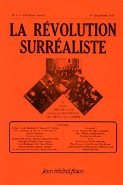
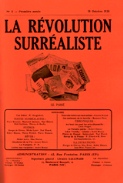
English Translations of Articles
from La Révolution Surréaliste
From Issue 1
1. Preface (page 47 in Surrealism by Patrick Waldberg)
2. Rêves
a. by Giorgio de Chirico (Dream, found on page 222 in Hebdomeros, a novel by de Chirico)
b. by André Breton (Dream, found on page 479 in Surrealist Painters and Poets)
3. Textes Surréalistes
a. by Desnos (excerpt from Mourning For Mourning, found on pages 22 and 30 in The Automatic Muse)
b. by Péret (excerpt from The Elegant Ewe, found on page 125 in The Automatic Muse)
From Issue 2
1. LE SUICIDE EST-IL SOLUTION? (Is Suicide a Solution? The response by Antonin Artaud is found on page 60 of Artaud Anthology)
2. OUVREZ LES PRISONS, LICENCIEZ L'ARMÉE (translated as OPEN THE PRISONS! DISBAND THE ARMY! on page 49 in Surrealism by Patrick Waldberg)
3. La liquidation de l'opium (translated as The Liquidation of Opium on page 61 of Artaud Anthology)
4. La Mort: La muraille de chêne by Desnos (translated as Death: The Oaken Rampart on page 50 in Surrealism)
5. Sciences morales: Libre à vous! by Aragon (translated as Ethical Sciences: Free to You!, found on page 52 in Surrealism)
6. Le Sommeil: Je ne sais pas découper by René Crevel (translated as I Don't Know How to Cut It Up, found on page 497 in Surrealist Painters and Poets)
7. Rêves: Le Pays de mes Rêves by Michel Leiris (translated as The Country of my Dreams, found on page 499 in Surrealist Painters and Poets)
8. Le Bureau de Recherches surréalistes (The Bureau of Surrealist Enquires, found on page 54 in Surrealism)
9. AVIS (Notice, found on page 55 in Surrealism)
From Issue 3
1. Rêves by Antonin Artaud (Dream, found on page 475 in Surrealist Painters and Poets)
2. A Table (Dinner is Served)
3. Lettre aux Recteurs des Universités Européennes (Letter to the Chancellors of the European Universities)
4. Adresse au Pape (Address to the Pope)
5. Adresse au Dalai-Lama (Address to the Dali Lama)
6. Lettre aux écoles du Bouddha (Letter to the Buddhist Schools)
(Articles 2-6, whose author remained anonymous, were presumably written by Antonin Artaud. They can be found on pages 56-60 in Surrealism by Patrick Waldberg.)
From Issue 4
1. Poèmes by Eluard (two of the poems, André Masson and Georges Braque, are found on pages 179 and 210 in the collection Capital of Pain)
2. Rêves by Michel Leiris (Dream, found on page 505 in Surrealist Painters and Poets)
3. Les parasites voyagent by Péret (an excerpt from Death to the Pigs, found on page 96 of that book)
4. La baie de la faim by Desnos (Chapter Five of Liberty or Love, found on page 65 of that book)
5. Le Surréalisme et la Peinture by Breton (an excerpt from Surrealism and Painting, which is available in its entirety from MFA Publications)
From Issue 5
1. Lettre aux voyantes (translated as Letter to Seers on page 195 of Breton's Manifestoes of Surrealism)
2. Poèmes by Eluard
a. Au hasard (translated as By Chance on page 202 in the collection Capital of Pain)
b. Ne plus partager (translated as To Share No Longer on page 152 of Capital of Pain)
From Issue 6
1. Entrée des Succubes by Louis Aragon (translated as Enter the Succubi on page 177 in The Dedalus Book of Surrealism: The Identity of Things)
2. Poèmes
a. La mort héroique du Lieutenant Condamine de la Tour (The Heroic Death of Lieutenant Condamine de la Tour, found on page 40 in Death to the Pigs by Péret)
b. La mort de Madame Cognacq (The Death of Mother Cognacq, found on page 95 in From the Hidden Storehouse by Péret)
3. VIVE LA MARIÉE! by Unik (translated as Long Live the Bride! on page 76 in The Dedalus Book of Surrealism: The Identity of Things)
4. Le Surréalisme et la Peinture by Breton (an excerpt from Surrealism and Painting, which is available in its entirety from MFA Publications)
From Issue 7
1. Rêves by Marcel Noll (Dream, found on page 19 in The Dedalus Book of Surrealism: The Identity of Things)
2. Poèmes A la mystérieuse (seven poems by Desnos, found on pages 12-21 in The Selected Poems of Robert Desnos; pages 145-167 in Essential Poems and Writings of Robert Desnos; and on pages 16-25 in The Voice of Robert Desnos)
3. La derniére nuit du condamné a mort by Péret (translated as The Condemned Man's Last Flight on page 119 in Death to the Pigs)
4. Le Surréalisme et la Peinture by Breton (an excerpt from Surrealism and Painting, which is available in its entirety from MFA Publications)
From Issue 8
1. Poèmes a. Le Congrês Eucharistique de Chicago by Péret (translated as The Eucharistic Congress on page 106 of The Hidden Storehouse)
b. Le Tour de France cycliste by Péret (translated as The Tour de France Bicycle Racer on page 110 of The Hidden Storehouse)
3. Legitimate Defense (found on page 242 in The History of Surrealism by Maurice Nadeau)
From Issue 9-10
1. Hands Off Love (found on page 262 in The History of Surrealism by Maurice Nadeau)
2. Journal d'une apparition (translated as Journal of an Apparition on page 129 of Essential Poems and Writings of Robert Desnos)
3. Poèmes - Défense de savoir (eight poems by Eluard, translated as Knowledge Forbidden on pages 165-181 in Love, Poetry)
4. Corps a Corps (translated as One to One on page 122 in Death to the Pigs by Péret)
5. Le Surréalisme et la Peinture by Breton (an excerpt from Surrealism and Painting, which is available in its entirety from MFA Publications)
From Issue 11
1. Traité du Style (an excerpt from Aragon's Treatise on Style, which is available in its entirety from University of Nebraska Press)
2. Nadja (a fragment from Breton's book, which is available from Grove Press)
3. Consuella, or méditations sur le Gouffre de Padirac (a fragment from Consuella or Meditations on the Gouffre de Padirac by Roger Vitrac, found on page 45 in The Myth of the World: Surrealism 2)
4. Le Cinquantenaire de l'hysterie by Aragon and Breton (translated as The Quinquagenary of Hysteria on page 61 of Surrealism by Patrick Waldberg)
5. Recherches sur la sexualité (Sex Inquires 1-2, which are featured on pages 1-34 in the book Investigating Sex)
From Issue 12
1. Second Manifeste du Surréalisme (Second Manifesto of Surrealism by Breton, presented in its entirety; an English translation is featured on page 117 of the book Manifestoes of Surrealism, published by University of Michigan Press)
2. L'Homme approximatif (fragments from Tzara's epic poem Approximate Man, found on page 23 in the book Approximate Man & Other Writing by Tristan Tzara)
3. Un chein andalou (film script by Buñuel & Dalí; an English translation was published by Lorrimer Publishing, along with the script for L'Age d'Or )
4. Je ne mange pas de ce pain-la (five poems from Péret's collection I Won't Stoop to That; two of the poems, The Law Paul Boncour and Hymn of Patriotic War Veterans, appear in the book From the Hidden Storehouse on pages 98 and 104, while The Stabilization of the Franc appears on page 33 of A Marvelous World)
5. Notes sur la poésie (Notes on Poetry by Breton & Eluard; found on page 274 in The History of Surrealism by Maurice Nadeau) 6. Jacques Rigaut (found on page 63 of Surrealism by Patrick Waldberg, as well as in the Atlas Press publications Lord Patchogue and 4 Dada Suicides)
Le Surréalisme au service de la révolution
After the publication of Breton's Second Manifesto of Surrealism in 1929, the Paris group began developing a more politically charged follow-up to La Révolution Surréaliste. The first issue of Le Surréalisme au service de la révolution (Surrealism in Service of the Revolution) appeared in June 1930, and was followed by five more issues through 1933.
Issue 1 (July 1930)
Highlights include Dors (Sleep) by Paul Eluard; Il y aura une fois (There Will Be Times) by Breton; Mort, maladie et littérature (Death, Disease and Literature) by René Crevel; and a commentary by Breton about the death of Russian poet Vladimir Mayakovsky. Among other contributors are Tristan Tzara, Salvador Dalí, René Char, Benjamin Péret, Louis Aragon and André Thiron. Illustrations include four stills from the Buñuel & Dalí film L'Age d'Or, a Man Ray photo, paintings by Dalí, and an image of Mayakovsky with a skeleton.
Issue 2 (October 1930)
Features Rapports du travail intellectuel et du capital (Reports of Work and Intellectual Capital) by Breton; a handful of articles on the Marquis de Sade; a chapter from The Immaculate Conception (L'Homme) by Breton and Eluard; and three poems by Péret. Other contributors include Char, Aragon, Duchamp, Crevel, Dalí, Georges Sadoul and Albert Valentin. Art work includes a photograph by Man Ray and paintings by Dalí and Tanguy.
Issue 3 (December 1931)
Opens with Le surréalisme et le devenir revolutionnaire (Surrealism and the Future Revolutionary) by Aragon. Other highlights include poems by Breton and Eluard; an excerpt from Breton's Communicating Vessels; a catalogue of surrealist objects made by the group; and an article, Danger de pollution (The Danger of Pollution), by Max Ernst. Other contributions are made by Maxim Alexandre, René Char, Crevel and Dalí. The issue closes with examples of surrealist objects by Miró, Giacometti, Gala Eluard, Valentine Hugo, Breton and Dalí, as well as a photograph by Man Ray.
Issue 4 (December 1931)
Includes Le patriotisme de l'inconscient (Patriotism of the Unconscious) by Crevel; an excerpt from Breton's Communicating Vessels; six poems from Eluard's collection La Vie immédiate; and Essai sur la situation de la poésie (Examination on the Situation of Poetry) by Tzara. There are also paintings by Ernst, Tanguy and Dalí.
Issues 3 and 4 were published simultaneously.
Issue 5 (May 1933)
Highlights include an article on the Marquis de Sade by Maurice Heine; three letters from Sigmund Freud to André Breton; Le images défendues (The Image Defended) by Paul Nougé; two poems by Péret; and Notes en vue d'une psycho-dialectique (Notes for a Psycho-Dialectic) by Crevel. Other written contributions are made by Duchamp, Dalí, Alberto Giacometti, Joe Bousquet and Alberto Savinio. Art work includes paintings by Valentine Hugo, Max Ernst, Man Ray, Duchamp and Dalí.
Issue 6 (May 1933)
The final issue of Le Surréalisme au service de la révolution opens with an advertisement for its successor, the periodical Minotaure. Highlights include an article by Breton acknowledging the centennial of writer Achim von Arnim's death; a series of questions and responses titled RECHERCHES EXPÉRIMENTALES (EXPERIMENTAL RESEARCH); five poems by Péret; Une girafe (A Giraffe) by Buñuel; and Comment on force l'inspiration (How Inspiration Is Forced) by Ernst. Art work includes paintings by Magritte, Dalí, Tanguy and Valentine Hugu, a collage by Breton, and a Surrealist object by Alberto Giacometti.
Issues 5 & 6 were published simultaneously.
Note: An anthology featuring all twelve issues of Le Surréalisme au service de la révolution is available from the French publisher Jean Michel Place.
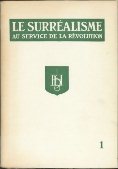
Minotaure and Post-War Publications
Minotaure
Published in Paris from 1933 through 1938, Minotaure was notable for its striking color illustrations, as well as contributions made by an array of distinguished artists, writers, philosophers, psychiatrists and anthropologists. Co-edited by Breton, the periodical became a showcase for the works of numerous Surrealists, though the overt political stance of the movement was largely missing, at the behest of the magazine's publisher Albert Skira. Twelve issues appeared over a period of more than five years, featuring articles and art work by Breton, Eluard, Queneau, Péret, Bataille, Duchamp, Dalí, Magritte, Miró, de Chirico, Ernst, Tanguy, Picasso, Man Ray, André Masson, Hans Arp, Paul Delvaux and Hans Bellmer, among others.

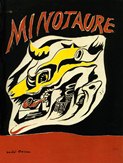
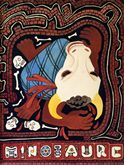
VVV
Four issues of VVV were published in New York City between 1942 and 1944, representing the attitudes and artistic explorations of numerous European émigrés. The periodical was edited by David Hare, Breton, Duchamp and Ernst, with contributions by several surrealists, including Péret, Miró, Masson, de Chirico, Tanguy, E.L.T. Mesens, Victor Brauner, Leonore Carrington and Oscar Dominguez.
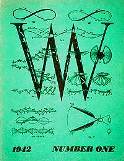
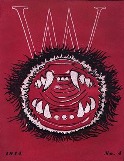
Medium
A post-War Surrealist magazine, published in Paris between 1952 and 1955. Edited by Jean Schuster, the four issues of Medium featured contributions by Breton, Péret, Savinio, Toyen, Duchamp, Wilfredo Lam & Eugene Ionesco, among others.
Le Surréalisme, Même
Another post-War Surrealist periodical, edited by Breton, under the direction of Jean Schuster. Three issues of Le Surréalisme, Même were published between 1956 and 1957. Among the many contributors were Péret, Duchamp, Toyen, Carrington, Man Ray, E.L.T. Mesens, Jindrich Styrský, Jean-Claude Silbermann and Meret Oppenheim.

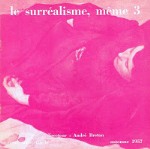
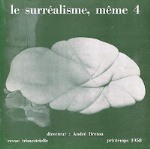
Bief
Published in Paris between 1958 and 1960, Bief featured political articles that reflected the Surrealist group's attitudes concerning the French/Algerian War, as well as literary and art criticism. Contributors included Breton, Péret, Gérard Legrand, Jean Schuster, Jean Robert Benayoun, Jean-Claude Silbermann and Jose Pierre, among others. Eleven issues appeared in all, the ninth of which (from December of 1959) paid tribute to Péret, who had died earlier that year.
La Brèche - action surréaliste
Eight issues of La Brèche were published from 1961 to 1965, featuring articles on art, politics, psychology and Surrealism. Among the contributors were Breton, Nougé, Benayoun, Schuster, Legrand, Pierre and Silbermann. Several issues paid tribute to writers of the past, including Oskar Panizza, the Marquis de Sade and Georges Bataille.
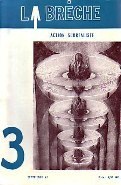
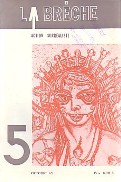
Periodicals from the Belgian Surrealists
Correspondance
Published in Brussels from 1924 to 1925, Correspondance marked the beginning of the Belgian Surrealist Movement. Created by Paul Nougé, Camille Goemans and Marcel Lecomte, the periodical was printed on different colored flyers and featured articles that were often critical of the Paris Surrealists. Twenty-two issues appeared in all, spanning a period of just seven months, and coinciding with the publication of Breton's first Manifesto of Surrealism, as well as the early issues of La Révolution Surréaliste.
OEsophage
OEsophage was a Dada-inspired periodical published in Brussels by E.L.T. Mesens and René Magritte. Only one issue appeared in March of 1925. Several Paris Dadaists contributed, including Tristan Tzara, Max Ernst, Hans Arp, Francis Picabia and Georges Ribemont-Dessaignes.
Marie and Adieu á Marie
Two issues of Marie were published in June & July of 1926, followed by a third issue, Adieu á Marie, in 1927. The periodical united the talents of Mesens and Magritte with those of Paul Nougé, Marcel Lecomte and Camille Goemans, thus officially launching the Belgian Surrealist Movement. Other contributors included Gaston Burssens, Paul von Ostayen, Hermann Closson and Man Ray.
Le Disque Vert
A Belgian periodical founded by Franz Hellens, Le Disque Vert (The Green Disc) was published in Brussels and Paris during the 1920s, changing its name on at least two occasions. In 1924, a special edition was devoted to the studies of Sigmund Freud, featuring articles by psychiatrists, psychoanalysts and writers, including Philippe Soupault, René Crevel and Henri Michaux. In 1925, special issues focused on Lautréamont and the Paris Surrealists, with contributions by Breton, Eluard, Soupault, Leiris and Artaud.
Note: Reproductions of Correspondance, OEsophage and Marie are available through Didier Devillez Éditeur as part of their Fac-Similé collection.
Other Periodicals
SIC
Published in Paris from 1916 to 1919, SIC (Sounds, Ideas, Colors) reflected the avant-garde explorations of the early 20th Century, from Cubism and Futurism, to Dadaism and Surrealism. Edited by Pierre Albert-Birot, the periodical featured works by Tzara, Aragon, Breton, Soupault and Yvan Goll, as well as by Albert-Birot himself, including excerpts from his mammoth effort Grabinoulor. Fifty-four issues of SIC appeared in all.
Note: The University of Iowa Libraries offer an International Dada Archive online, where all issues of SIC can be viewed and downloaded.
Aventure
Aventure was a Dada-inspired periodical published in Paris between 1921 and 1922. Edited by René Crevel, Roger Vitrac and Georges Limbour, its three issues featured contributions by Baron, Tzara, Morise, Jean Cocteau and Man Ray, among others.
Note: The three issues of Aventure can be viewed and downloaded online at the University of Iowa Libraries' International Dada Archive.
Le coeur à barbe
Only one issue of Le coeur à barbe was published in 1922. Edited by Eluard, Ribemont-Dessaignes and Tzara, the periodical was printed on pink paper and featured contributions by Soupault, Péret, Erik Satie and Walter Serner.
Le Grand Jeu
Founded by René Daumal, Roger Gilbert-Lecomte, Roger Vaillant and Robert Meyrat, Le Grand Jeu (The Great Game) appeared in 1929 and 1930, during a gap between the two Surrealist periodicals La Révolution Surréaliste and Le Surréalisme au service de la révolution. Though Daumal and his circle shared many common goals with Surrealism, they chose to follow their own path, maintaining complete independence. Among other contributors to Le Grand Jeu were Maurice Henry, Joseph Sima and Arthur Harfaux, as well as several dissident Surrealists, including Desnos, Leiris, Crevel and Ribemont-Dessaignes. Three issues of the review were published, with a fourth eventually appearing in 1932.
Note: An anthology featuring all four issues of Le Grand Jeu is available from the French publisher Jean Michel Place.
Bifur
Eight issues of Bifur were published in Paris from 1929 to 1931, under the direction of Ribemont-Dessaignes. Several Surrealists participated, including Desnos, Leiris, Soupault, Buñuel, Arp, Tzara, Picabia and Man Ray. Among other contributors were Henri Michaux, Franz Kafka, James Joyce and Ramon Gomez de la Serna.
Documents and Acéphale
Documents was a periodical founded in Paris by Georges Bataille and Pierre d'Espezel. Its articles explored the worlds of literature, art, philosophy, psychology, archeology and ethnology. Seventeen issues were published between 1929 and 1934, featuring contributions by Bataille, Leiris, Desnos, Jacques Baron, Jacques-André Boiffard and Carl Einstein, among others.
Acéphale ("headless" in Greek) was a magazine published under the guidance of Bataille from 1936 to 1939. It was also the name of a secret society whose membership is still not completely known. Five issues appeared in Paris, featuring studies on religion, philosophy and sociology. Known contributors were Bataille, Jean Rollin, Pierre Klossowski, André Masson, Jean Wahl and Jules Mannerot. Several articles in the review dealt with the philosopher Friedrich Nietzsche, including Nietzsche and the Fascists in Issue One.
Notes:
1. The French publisher Jean Michel Place offers anthologies featuring all issues of Documents and Acéphale.
2. Encyclopædia Acephalica, published by Atlas Press, contains The Critical Dictionary and related texts from Documents, as well as the Encyclopædia da Costa.
All of the biographies and book lists found on this site, as well as texts found on the HOME, HISTORY, COMMENTARY & PERIODICALS pages, are the sole property of Surrealism-Plays.com.
